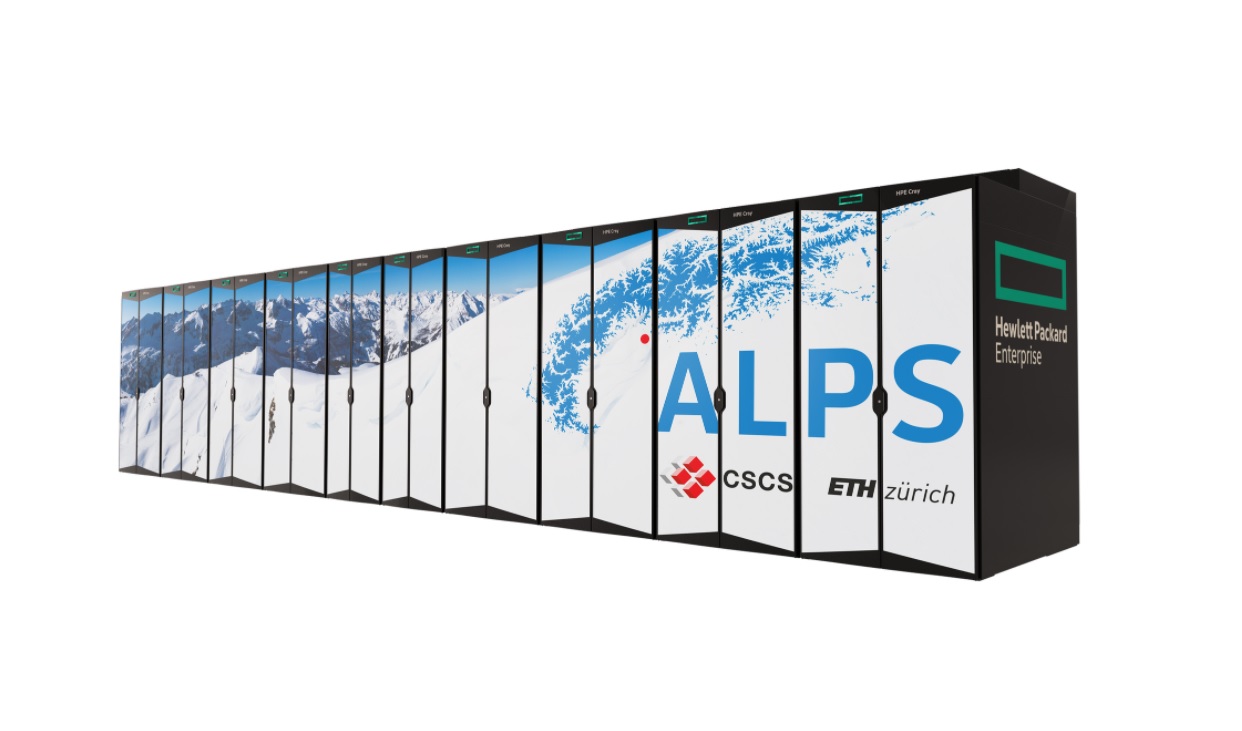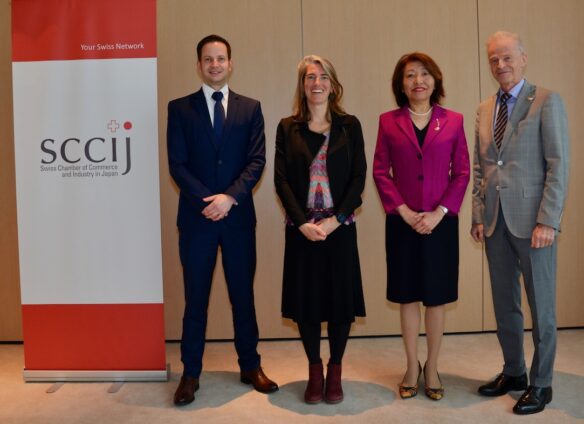Tokyo (SCCIJ) – Switzerland is building the world’s most powerful supercomputer focused on artificial intelligence. The “Alps” system is designed for researchers and will come online 2023 as scheduled despite the COVID-19 pandemic. The Swiss National Supercomputing Center (CSCS) is partnering with Hewlett Packard and Nvidia to combine classic supercomputing and AI technologies for superior performance.

Switzerland’s new supercomputer increases the speed of data processing for AI applications significantly (© CSCS).
Breakthrough research
The new data center will replace CSCS’s existing Piz Daint supercomputer and serve as a general-purpose system open to the broad community of researchers in Switzerland and the rest of the world. It will enable breakthrough research on a wide range of fields, including climate and weather, materials sciences, astrophysics, computational fluid dynamics, life sciences, molecular dynamics, quantum chemistry, and particle physics, as well as domains like economics and social sciences.
Alps will be based on the new Hewlett Packard Cray EX supercomputer product line. This high-performance computing architecture is specifically designed to efficiently harness insights from vast, ever-increasing amounts of complex data. It features the Hewlett Packard Cray software stack for a software-defined supercomputing experience, and the Nvidia HGX supercomputing platform. This includes Nvidia’s graphics processing units and the new Arm-based Nvidia Grace central processing units.
Faster data processing for AI
Taking advantage of the tight coupling between these two different units, Alps will be able to train GPT-3, one of the world’s largest natural language processing models, in only two days — seven times faster than Nvidia’s 2.8-AI exaflops Selene supercomputer, currently recognized as the world’s leading supercomputer for artificial intelligence.
CSCS users will be able to apply this incredible AI performance to a wide range of emerging scientific research that can benefit from natural language understanding. Two examples are analyzing and understanding massive amounts of knowledge available in scientific papers and generating new molecules for drug discovery.
“Software-defined” system
”We are not simply procuring a new computer. For enabling scientific breakthroughs, we are retrofitting our computer center in several expansion phases to a service-oriented research infrastructure,” said Thomas Schulthess, a computational physicist at ETH Zurich and director of CSCS. “With the Cray Shasta software stack, we have opted for software-defined infrastructure. That is the decisive point for me — without this software stack, the new machine would lose a lot of its value,” he said in an interview.
The Swiss National Supercomputing Center as the national high-performance computing center was founded and is located in Lugano-Cornaredo. Its main function is a so-called National User Lab. All Swiss researchers and their assistants can get free access to CSCS various supercomputers in a competitive scientific evaluation process. Besides, the center operates dedicated computing facilities for specific research projects and national mandates, e.g. weather forecasting.
Text: SCCIJ based on material of CSCS





























